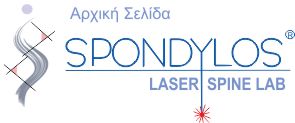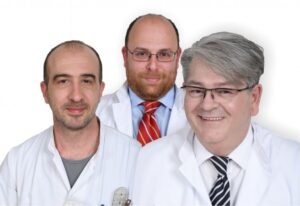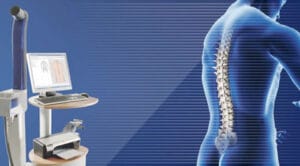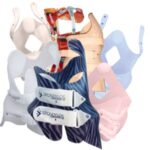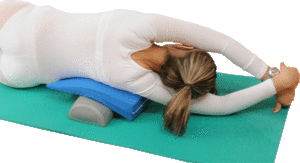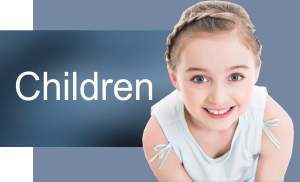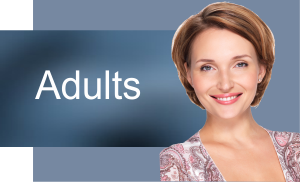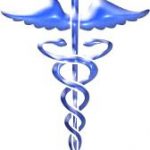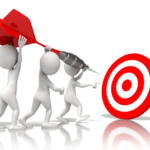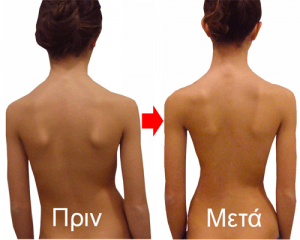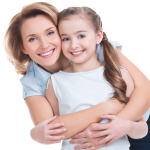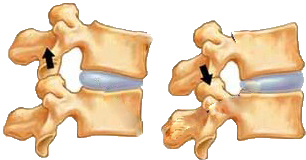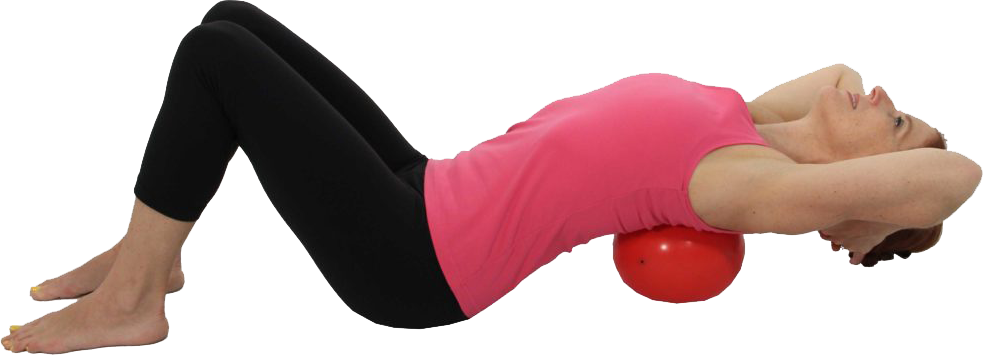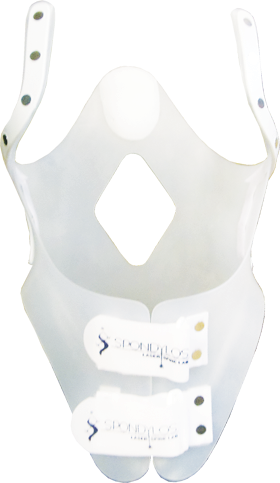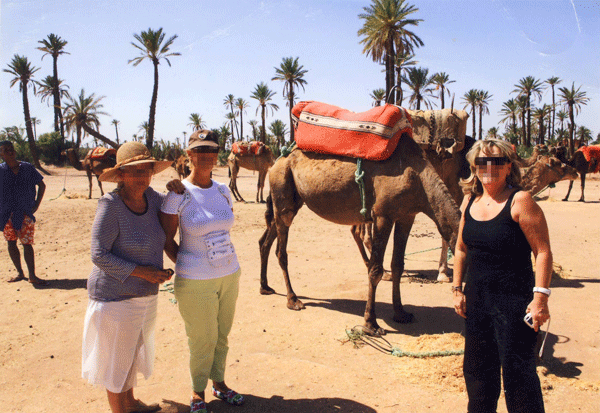Adult Kyphosis. What is it?
In a pathological kyphosis, usually of Scheuemann disease type, as time passes and the center of gravity moves forward, the deformation of the frontal part of the discs begins.
The consequences are:
- further increase of the kyphotic angle and
- the development of degenerative lesions on the final plates of the vertebra bodies, which develop into degenerative spondyloarthritis, involving also posterior vertebral joints.
The patient, after the age of 30, feels every day more hunchbacked and pains appear on the back and neck, usually in the long standing posture.
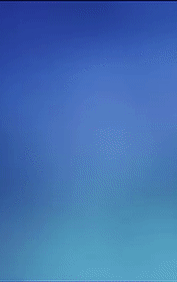
When the kyphotic angle increases, lordosis also increases in the lumbar spine for balance reasons, while the cervical spine also participates by straightening and losing its natural lordosis.
In the long run, the result is that the lumbar spine is affected by degeneration of the discs, and the cervical spine is affected by the development of cervical syndrome and the degeneration of the cervical discs.
As a conclusion, kyphosis is a condition that affects all three curves of the Spine.
By reducing kyphosis to a point, the other two curves return to normal, on condition that degenerative spondyloarthritis has not bridged through the produced osteophytes to adjacent vertebrae
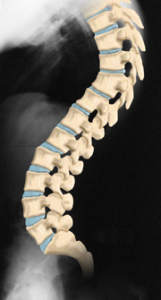
How it occurs?
In young patients and up until about 30-35 years of age with Adult Kyphosis, the intervertebral discs are simply compressed in their frontal parts and a deformation is created in them that do not affect the composition of the disc at this stage; degeneration has not yet begun. The deformation has the properties of a plastic deformation, whereby if the mechanic conditions and the directions of the forces change, then the intervertebral disc is decompressed.
At ages of up to 30 years old, the pain is minimal and it is apparent after hours of standing. The sense of hunching is more apparent when standing, and the need to stretch the back for relief.
Up until this age, where there are no degenerative lesions, it is the best time to achieve the best results as far as correcting the kyphotic angle is concerned. The results are usually good but also reversible, as long as the cause of the kyphosis remains and the vertebra are deformed by the Scheuermann disease.
The posterior vertebral joints (Facets) are the only joints in the spine. Spinal arthritis therefore means inflammation of these joints that are prone to the appearance of osteoarthritis. The joints are quite small in relation to the amount of body weight they carry. The resulting strain and stress make them prone to damage to the cartilage and injury. The accumulation of injuries throughout their lives causes breakage of the joints or degeneration.
The swollen vertebral joints transmit the pain signal through the spine. This signal causes spasm to the back muscles. The combination of muscle spasm and inflammation of the vertebral joint joints causes back pain.
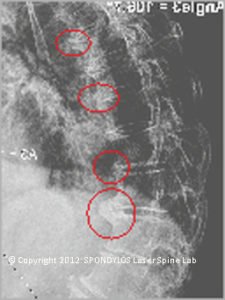
Adult Kyphosis Treatment
We have the SPONDYLOS program for adult kyphosis.
The program has two parts:
These are special exercising programs (Spondylos – Schroth – SEAS), personalized for every patient and their capabilities.
Each patient is estimated for the magnitude of the kyphosis (mild, moderate, severe kyphosis), the type (ex. Scheuermann, neuromuscular, posture etc), his symptoms (pain, stiffness, weak posture), its physical condition and its capabilities.
In a second step after consideration of the above, the exercises are selected and trained in these courses with progressive difficulty.
Every three months their status is reassessed.
2- Special dynamic SPONDYLOS kyphosis brace.
However, patients find that the result of the above exercise programs is not maintained long enough after the end of the exercises.
The role of the kyphosis brace in adults is to preserve the effects of the exercises.
It does not matter whether it will be applied in the morning, afternoon or night, if it is applied after the end of the exercises.
In osteoporotic kyphosis, the exercises are milder and progressive and the brace should be applied as long as the patient is upright or seated.
That is why the SPONDYLOS for the first time in the world, introduced nine years ago to treat adult kyphosis with the kyphosis SPONDYLOS brace, to maintain the effects of the exercises.
The brace should must be applied> 8 hours after the end of the exercises.
We have observed that the effects of the exercises are maximized if the patient wears the special kyphosis brace immediately after the exercises and for a period of 8-12 hours.
Secondary age related hyperkyphosis
Age-related hyperkhyphosis is a strong forward bending in the upper spine that occurs in older adults.
Sometimes called a Dowager hump or kyphotic deformity, this type of kyphosis makes movement difficult and increases the risk of falls and fractures.
The hyperkyphosis may be secondary to various diseases of the spine, such as osteoporosis, muscle weakness, degenerative spondyloarthritis and vertebral fractures, or a combination these.
Symptoms
- Pain
- Difficulty in moving and performing daily activities
- Stiffness
- Decreased height
Diagnosis
X-Rays in lateral upright position are usually used to estimate hyperkyphosis.
However, the elderly patients can make X-Rays in a supine lateral position.
In X-Rays we measure the degree of forward bending angle to determine the severity of the kyphosis.
Conservative treatment
- Physical therapy for immediate relief of pain
- The individualized exercise programs in daily performance under the guidance of a doctor and a physiotherapist
- SPONDYLOS kyphosis brace
